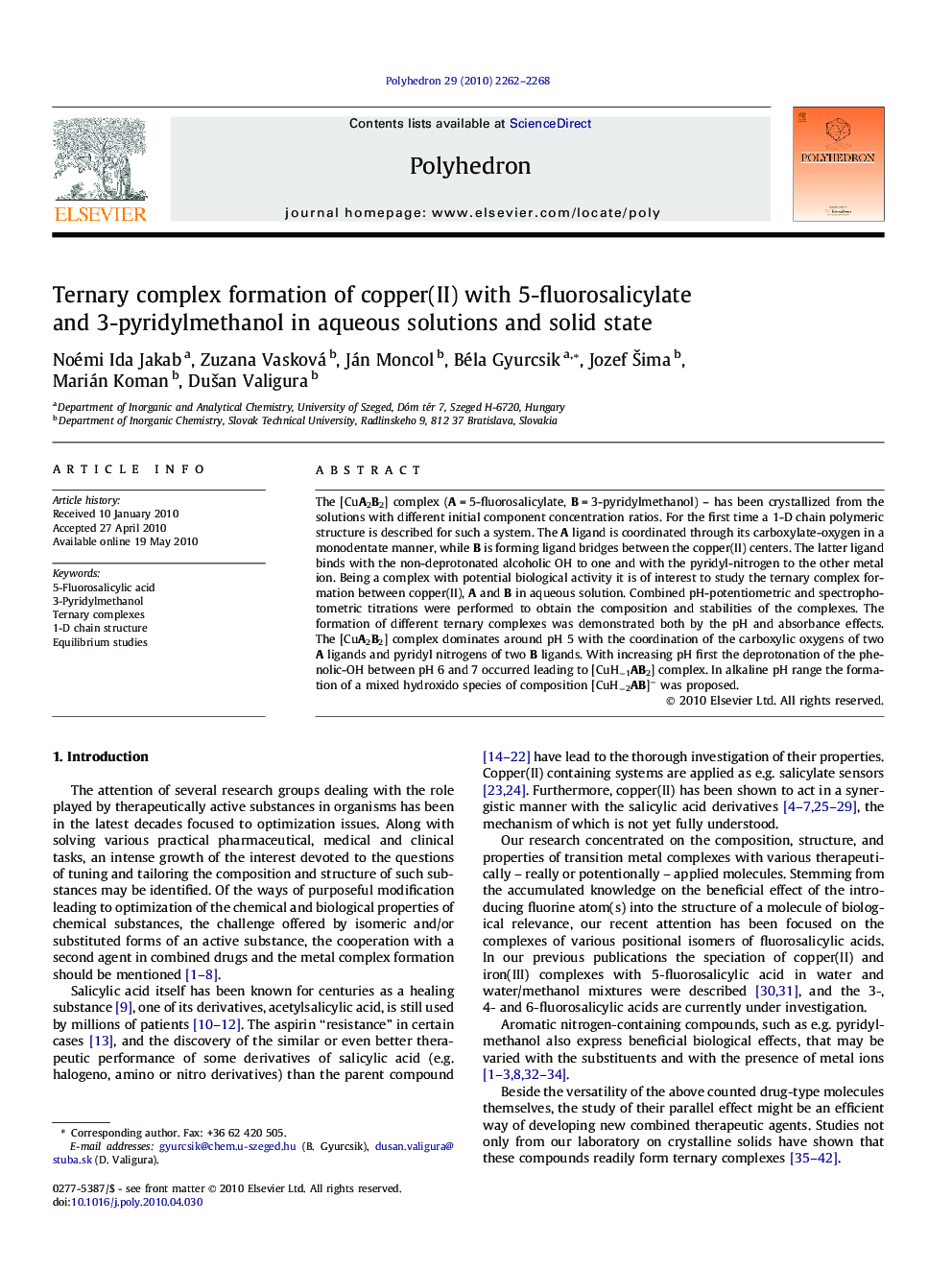| Article ID | Journal | Published Year | Pages | File Type |
|---|---|---|---|---|
| 1336675 | Polyhedron | 2010 | 7 Pages |
The [CuA2B2] complex (A = 5-fluorosalicylate, B = 3-pyridylmethanol) – has been crystallized from the solutions with different initial component concentration ratios. For the first time a 1-D chain polymeric structure is described for such a system. The A ligand is coordinated through its carboxylate-oxygen in a monodentate manner, while B is forming ligand bridges between the copper(II) centers. The latter ligand binds with the non-deprotonated alcoholic OH to one and with the pyridyl-nitrogen to the other metal ion. Being a complex with potential biological activity it is of interest to study the ternary complex formation between copper(II), A and B in aqueous solution. Combined pH-potentiometric and spectrophotometric titrations were performed to obtain the composition and stabilities of the complexes. The formation of different ternary complexes was demonstrated both by the pH and absorbance effects. The [CuA2B2] complex dominates around pH 5 with the coordination of the carboxylic oxygens of two A ligands and pyridyl nitrogens of two B ligands. With increasing pH first the deprotonation of the phenolic-OH between pH 6 and 7 occurred leading to [CuH−1AB2] complex. In alkaline pH range the formation of a mixed hydroxido species of composition [CuH−2AB]− was proposed.
Graphical abstractThe [CuA2B2] complex – where A = 5-fluorosalicylate and B = 3-pyridylmethanol (μ-3-PM, ronicol) – has been crystallized, and its formation in aqueous solution has been shown.Figure optionsDownload full-size imageDownload as PowerPoint slide
